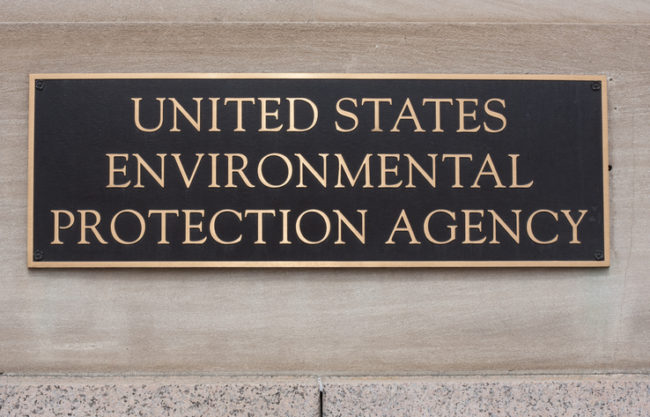The EPA maintains that it is working with local, state, and federal officials to respond to Hurricane Harvey, Hurricane Irma, and Hurricane Maria. With all three hurricanes, the EPA maintains that its role is to assess and assist with drinking water and waste water systems, Superfund sites, and flood waters.
Christine Todd Whitman, former EPA Administrator, recently interviewed by Bloomberg News claimed that vacancies at the top of nearly all 10 regional EPA offices will likely hamper EPA’s response to Hurricane Harvey. Whitman said that regional offices are missing Trump appointees and that this “…makes it difficult, because what you’ve got is a lot of career people in the regions without a leader who are worried every day about their job[s]…” Whitman believes that “[t]hey are afraid if they put a foot wrong they’ve signed their exit from the agency.”
Bloomberg also reports “that hundreds of employees are leaving the EPA as Scott Pruitt works toward a one-fifth reduction in head count.” Employee reduction buyouts were announced in June 2017.
In addition to the staffing reductions, President Trump’s proposed budget slashes EPA funding by 31 percent, even though the EPA has typically played a critical role in clean up from prior storms.
In Houston alone, 13 Superfund sites were reported to be flooded; there was a leak of benzene at an energy refinery that resulted in a plume of toxic smoke; and a chemical plant that flooded from Harvey suffered major explosions.
In all, it is estimated that flooding in the Houston area caused more than 1,000 tons of hazardous chemicals to leach into the environment.
In a recent interview with ABC Go News “Powerhouse Politics,” EPA Administrator Scott Pruitt, discussed EPA’s mission that involves the agency’s recovery efforts following the hurricanes. Pruitt stated that “we are looking at many things right now” involving Superfund sites, access to fuel, drinking water, and debris management. According to Pruitt, the initial response is to monitor and assess “our vulnerabilities” regarding these areas. Pruitt also claimed that “the EPA is doing a tremendous job with partnering with local governments to make sure they have the technical resources needed for the recovery.” Pruitt also touted the EPA’s collaboration with local, state, and federal government, its monitoring of Superfund sites, drinking and waste water systems, and the waiver of blended fuel requirements to ease fuel shortages.
The EPA is also separately reporting its efforts for the three hurricanes.
With respect to Hurricane Maria, the EPA reports that it had been monitoring and assessing the environmental impacts to Puerto Rico from its field office in Region 2 in Atlanta. On October 3, 2017 the EPA reopened that field office in Puerto Rico and claims that it has 166 employees involved in hurricane efforts with 46 situated in Puerto Rico and 23 in the U.S. Virgin Islands. According to USA Today, as of September 30, less than 50 percent of the population of 3.4 million in Puerto Rico have drinking water.
With Hurricane Harvey, the EPA reports there is a “Unified Command” with the EPA, the Texas Commission on Environmental Quality (TCEQ), the General Land Office and the U.S. Coast Guard to oversee response efforts. The EPA also reports that it has 57 personnel to assist in the response and the TCEQ has approximately 500 people assigned to the relief efforts. The EPA is also reporting that as of September 29, there were 2,238 drinking water systems impacted by Harvey with 38 boil water notices issued for 38 systems and 5 shut downs. Of the 1,743 waste water systems, seven are inoperable. Damage has been reported to 17 of 340 dams. The EPA also reports that TCEQ has assessed and cleared all 13 of the Superfund sites and 42 of the 43 NPL Superfund sites. The EPA also reports that its water quality sampling for flood waters will be focused on industrial facilities and hazardous waste sites.
As to Hurricane Irma, the EPA is reporting that as of September 30, it set up a mobile command post in Miami to support a unified command with the EPA, U.S. Army Corps of Engineers, Florida Department of Environmental Protection and response activities with the U.S. Coast Guard in the Florida Keys. The EPA states that it is conducting land based assessments on the inland areas of Marathon Key and Islamorada Key.
At this juncture it is too early to tell whether the EPA — with its reduction in personnel and looming budget cuts — can provide the necessary assistance for three separate hurricanes that all present their own unique challenges.

